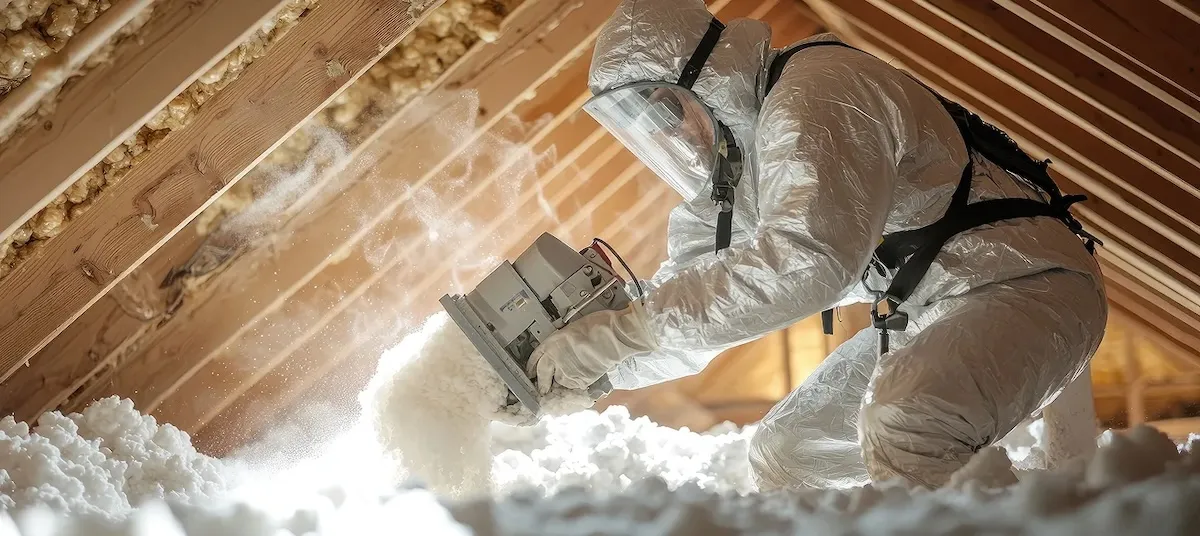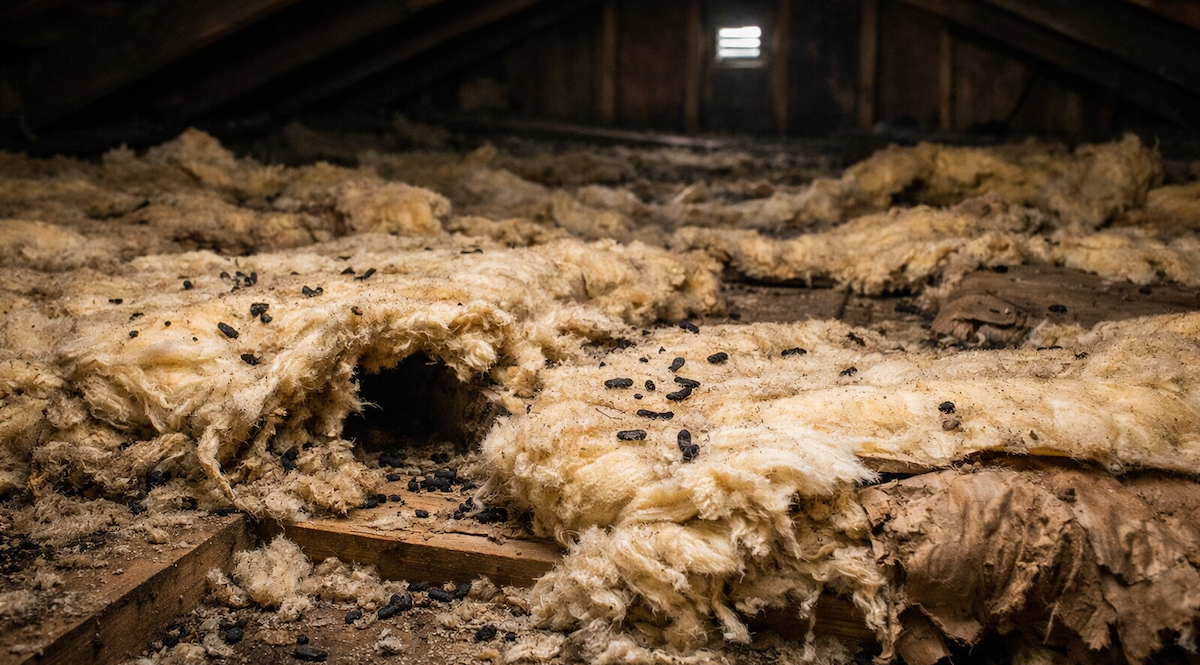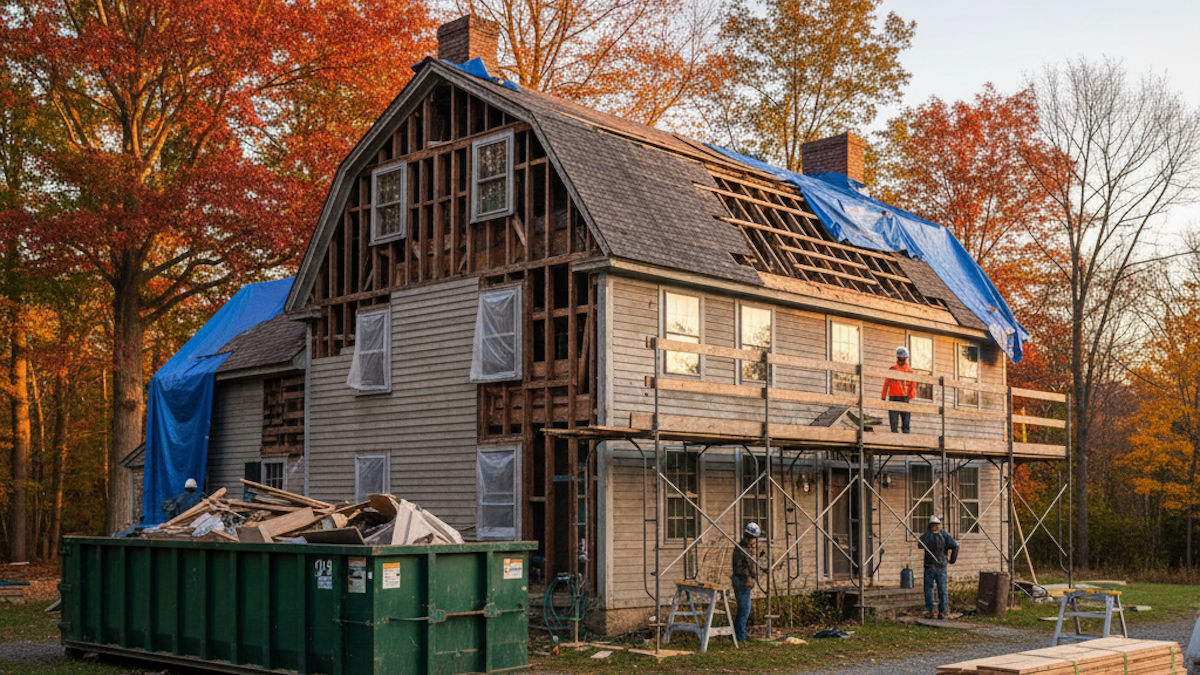What are the Different Types of Blown-In Insulation? A Guide to Blown-In Insulation

Let’s cut through the fluff—literally. When it comes to blown-in insulation, you’ve got three main players: cellulose, fiberglass, and mineral wool. They all technically “do the job,” but one of them does it better, cleaner, and smarter—especially if you care about your energy bill, the environment, and keeping your house comfortable year-round.
Here’s the breakdown, straight up.
1. Cellulose Insulation – The Heavyweight Champ 🥇
Made from shredded-up recycled newspaper and treated with borates (a natural fire retardant), cellulose insulation doesn’t just look like it means business—it actually does.
Why we swear by it:
- Higher R-Value – It keeps heat where it belongs: in during winter, out during summer. More bang for your buck.
- Air Sealing Like a Boss – It fills every little nook, crack, and air gap—no drafts sneaking through.
- Green as it Gets – Up to 85% recycled content, which means less trash in landfills.
- Mold & Pest Resistance – Borates handle mold, mice, and bugs like a bouncer at the door.
- Fire Resistance – Treated to slow down flames if disaster ever strikes.
Bottom line? This stuff works hard—and it works smart.
2. Fiberglass Insulation – The Lightweight Contender
Ah yes, the insulation most people recognize. Those little pink tufts or white fluffy clouds? That’s fiberglass insulation—made of spun glass fibers.
Pros:
- Cheap and easy to find.
- Decent thermal performance when installed perfectly.
Cons:
- Lower R-value than cellulose—so you’re losing heat and cash.
- Doesn’t seal air gaps well—hello drafts.
- Itches like crazy, and you don’t want it floating around your lungs.
You can do better. Trust me.
3. Mineral Wool (a.k.a. Rock Wool) – The Tough Guy
This one’s made from actual rock that’s been melted and spun into fibers. Sounds metal. Literally.
Pros:
- Naturally fire-resistant—no extra chemicals needed.
- Great at blocking sound. (Bonus if you’ve got noisy neighbors.)
Cons:
- Expensive.
- Harder to find.
- Heavy as hell—can even require beefing up your framing.
It’s solid—but overkill for most residential jobs. Unless you’re building a recording studio or a medieval castle, you probably don’t need this.
So… Why Cellulose?
Glad you asked. If you want:
✅ More energy savings
✅ Better indoor comfort
✅ Fewer drafts and moisture headaches
✅ Less environmental guilt
✅ No fiberglass rash or airborne irritants
…then cellulose is your clear winner. Especially here in Connecticut, where we get the full buffet of weather: humid summers, icy winters, and everything in between.
Common Blown-In Insulation FAQ's
Will cellulose insulation settle over time?
Yes, cellulose insulation can settle over time, but proper dense-pack installation limits this effect. When installed correctly, settling is minimal and factored into the initial application to maintain the target R-value. Poorly installed cellulose loses performance, but professional methods preserve long-term effectiveness.
Can blown-in cellulose be added over existing insulation?
Yes, blown-in cellulose can be added over existing insulation if the current material is dry, clean, and free of pests. This method is commonly used in Connecticut to improve energy efficiency by topping off old fiberglass with dense-pack cellulose. A professional inspection ensures proper conditions before installation.
Is cellulose safe to use around electrical wiring and fixtures?
Yes, cellulose insulation is safe to use around electrical wiring and fixtures when installed correctly. It is treated with fire retardants and meets residential safety standards. Installers must follow code requirements, especially near recessed lighting, using IC-rated fixtures or protective baffles where needed.
How long does blown-in insulation last?
Blown-in cellulose insulation typically lasts 20 to 30 years or more when properly installed and kept dry. It resists mold, pests, and settling thanks to borate treatment and dense packing. Unlike batt insulation, it retains performance over decades, making it a long-lasting solution for energy efficiency and comfort.
Will blown-in insulation make my home quieter?
Blown-in insulation, especially cellulose, can make your home noticeably quieter by dampening outside noise like traffic, rain, and neighbors. While not designed as soundproofing, its dense composition acts as an effective acoustic barrier, reducing sound transmission through walls, ceilings, and attic spaces.
The Bottom Line
If you’re still on the fence, let me make it simple: blown-in cellulose hits the sweet spot. It’s tougher than fiberglass, greener than mineral wool, and built to handle everything a Connecticut season throws at your home. You get higher R-values, better air sealing, fewer drafts, and insulation that doesn’t come with a side of lung irritation.
At Nealon Insulation, we’ve been dense-packing walls and attics since before most folks had cell phones. We’ve seen the gimmicks, and we’ve seen what works—and cellulose keeps delivering.
👉 Ready to upgrade your insulation? Contact Nealon Insulation and let’s make your home tighter, quieter, and way more efficient. No fluff. Just real results.
Related Articles
Let's Work Together
Ready to transform your home into an energy-efficient haven? Schedule your free energy assessment today and experience the Nealon difference for yourself.



